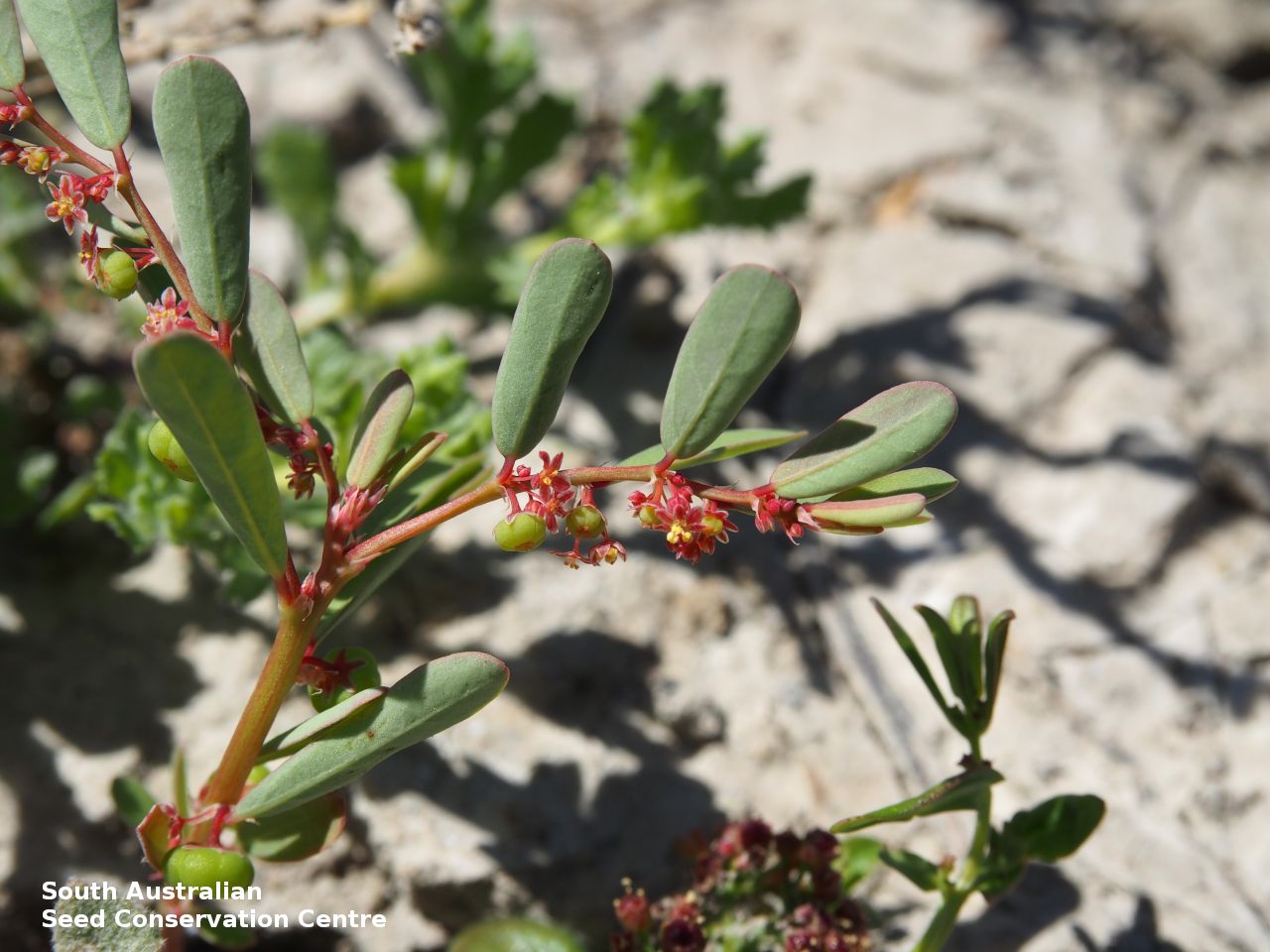
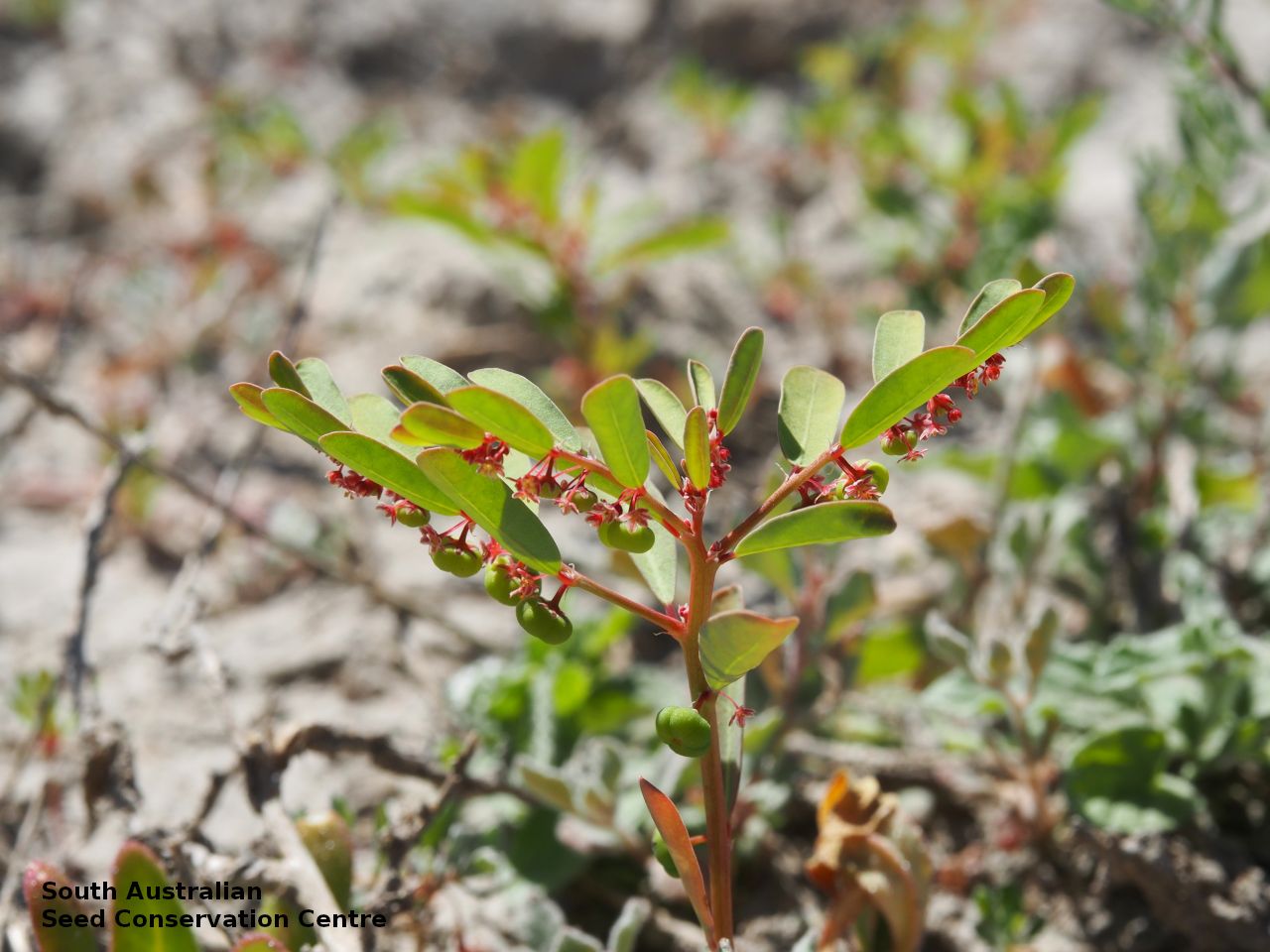
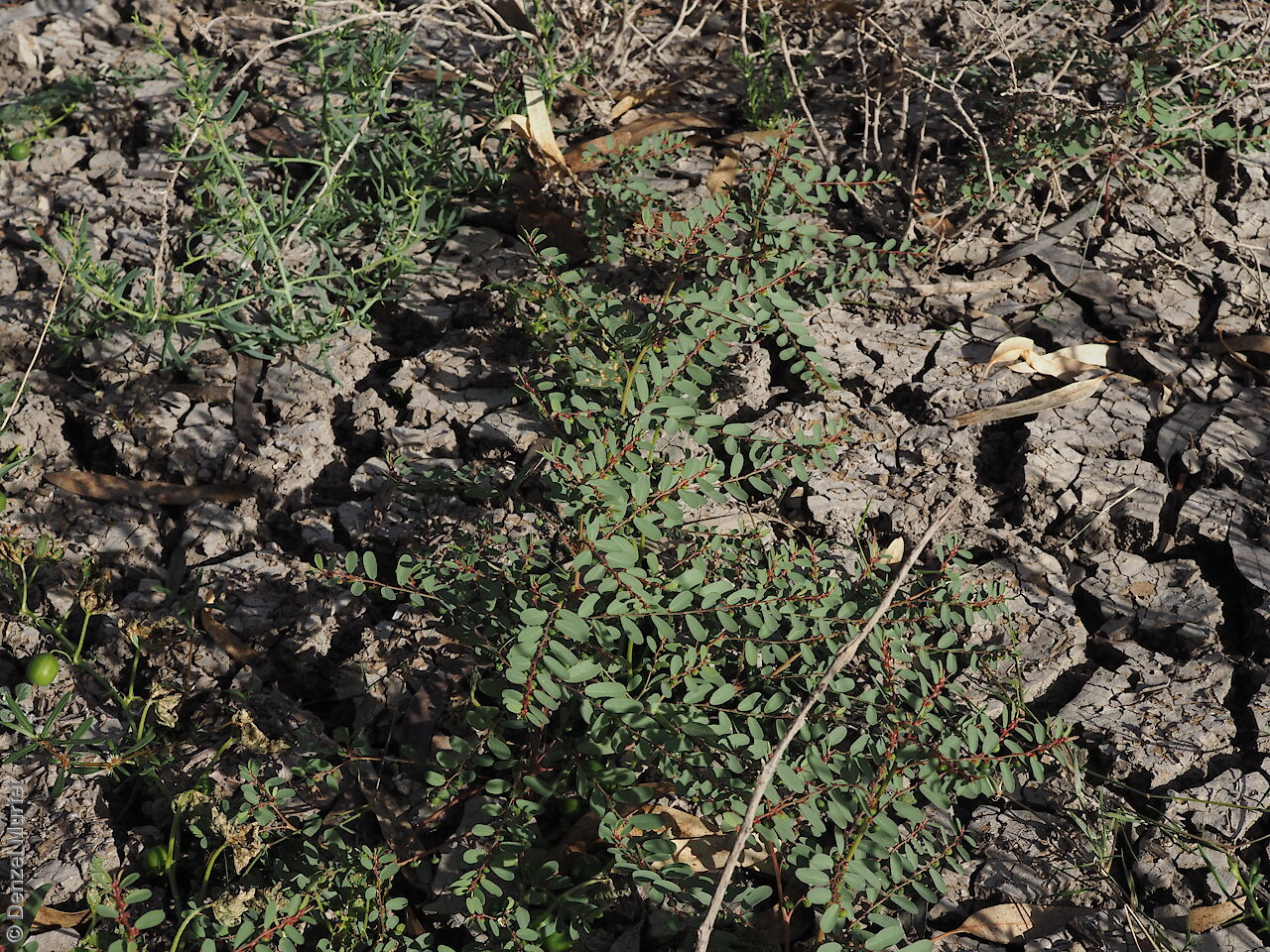
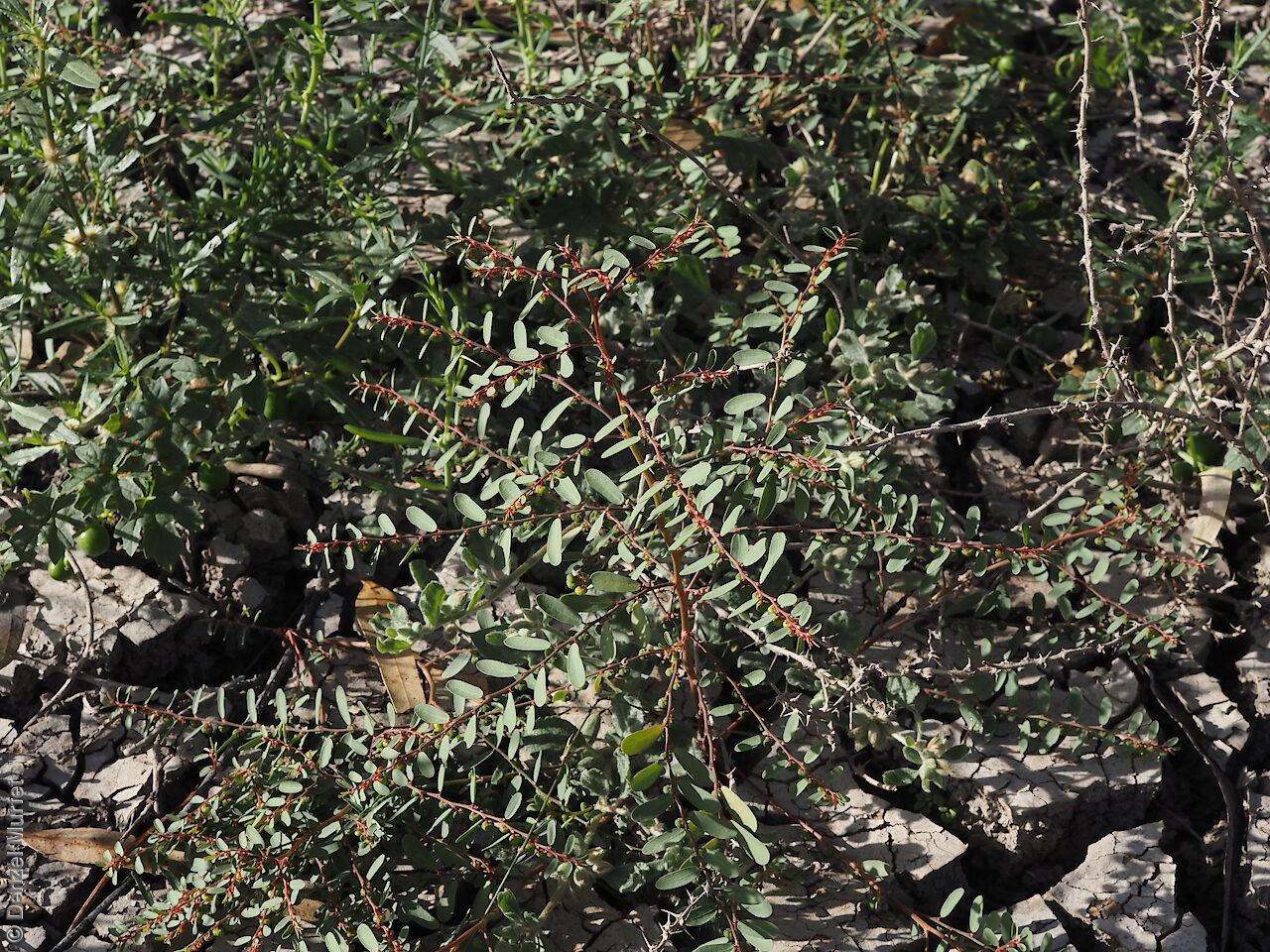
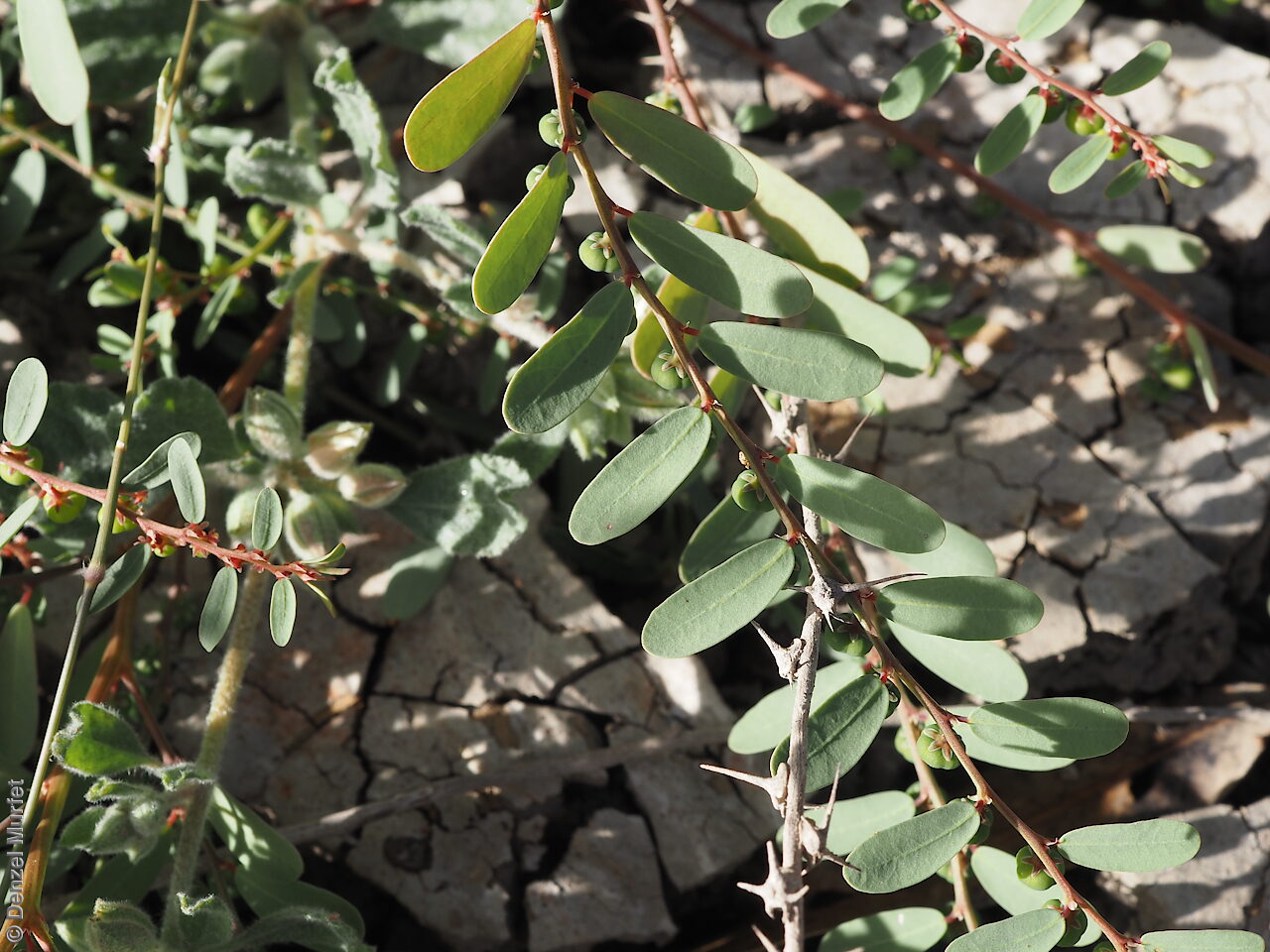
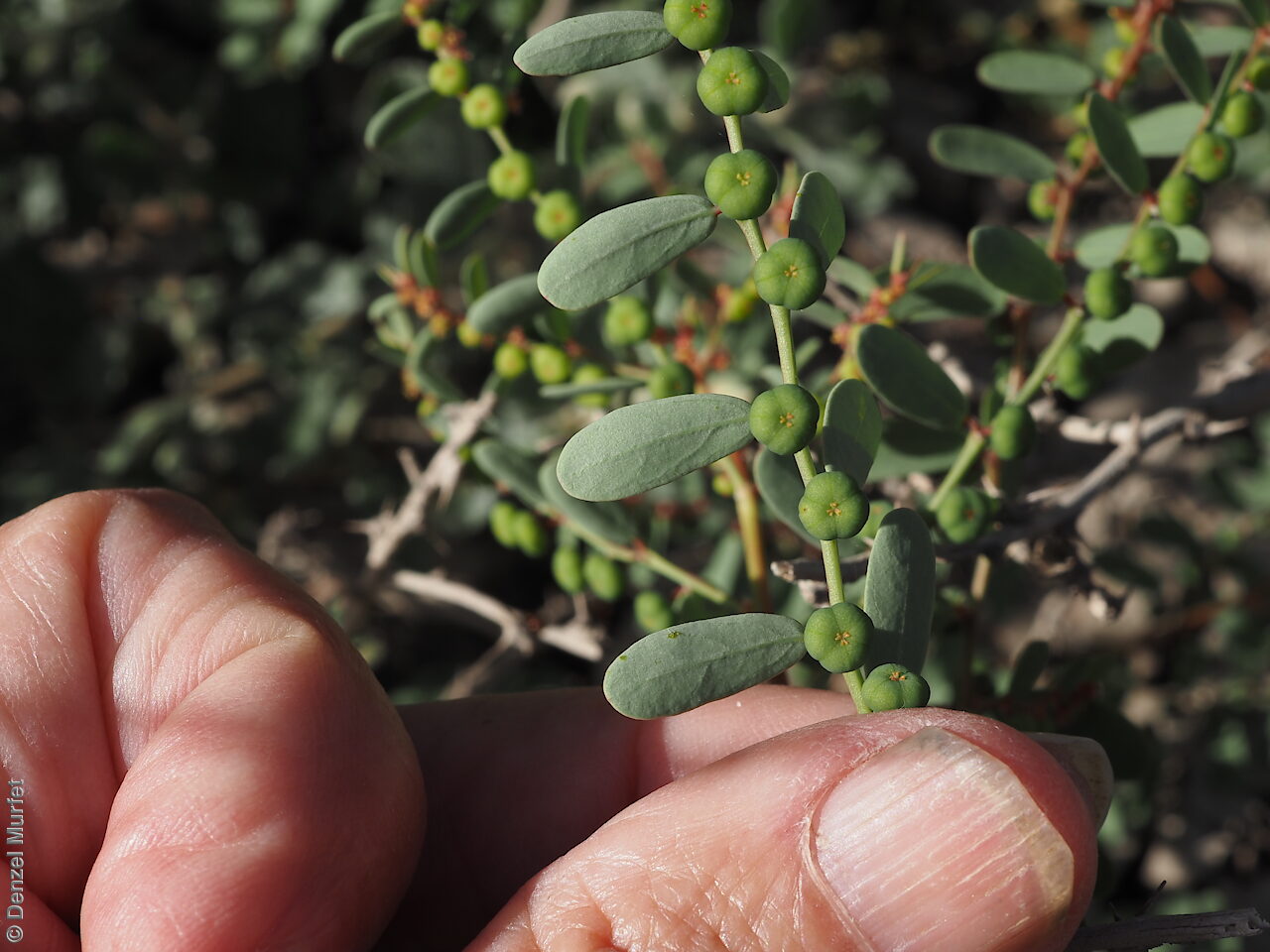
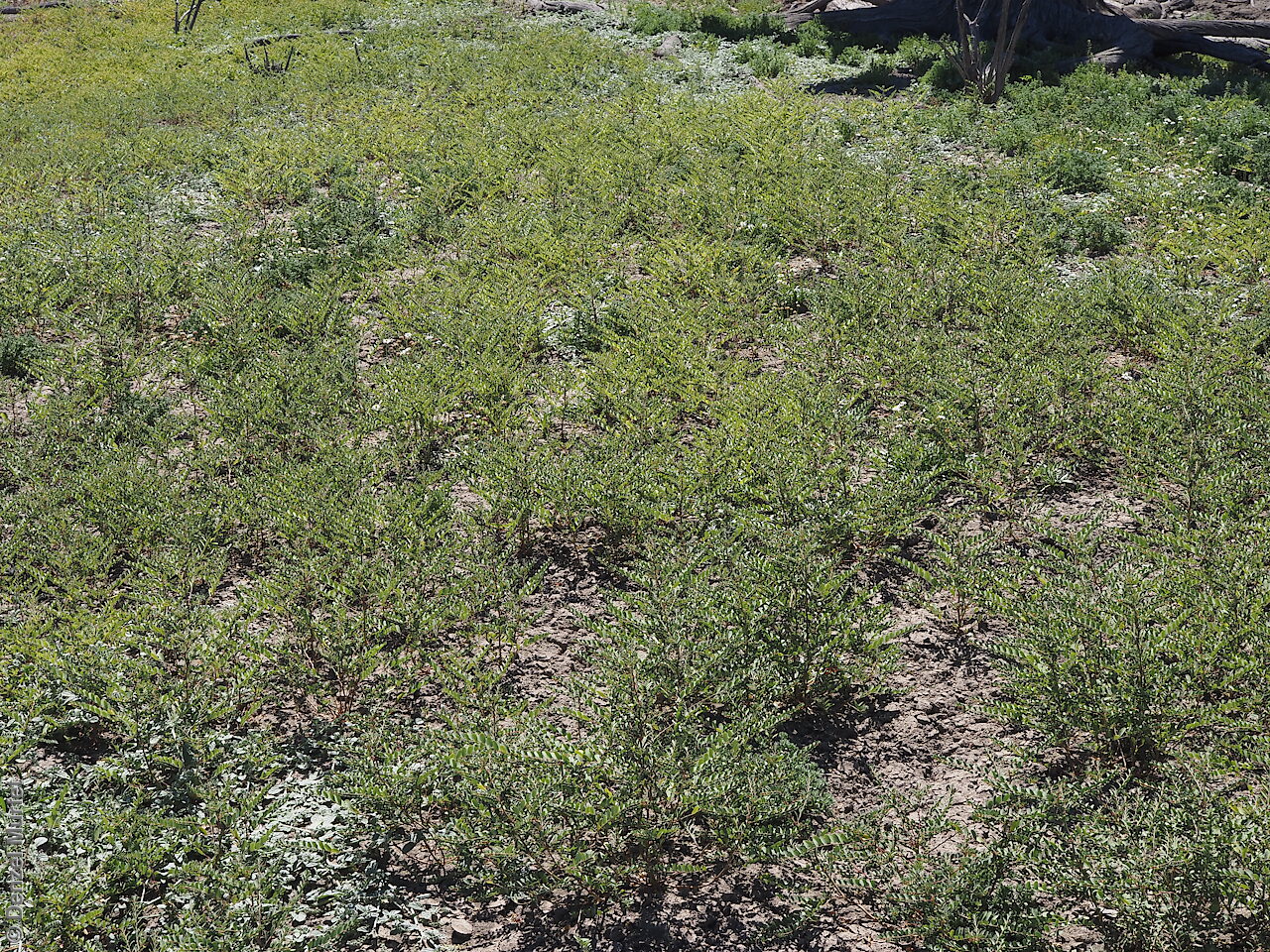
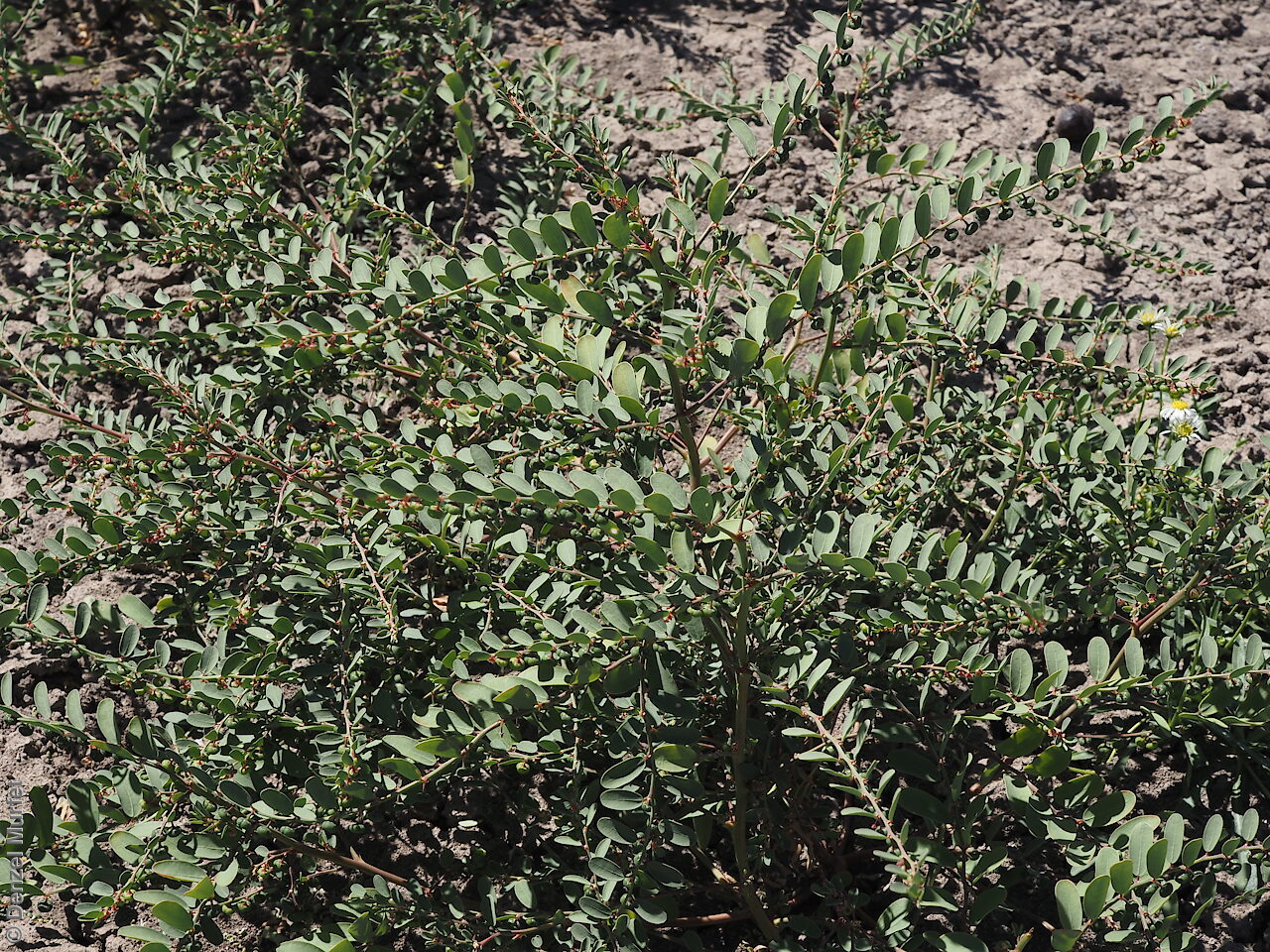
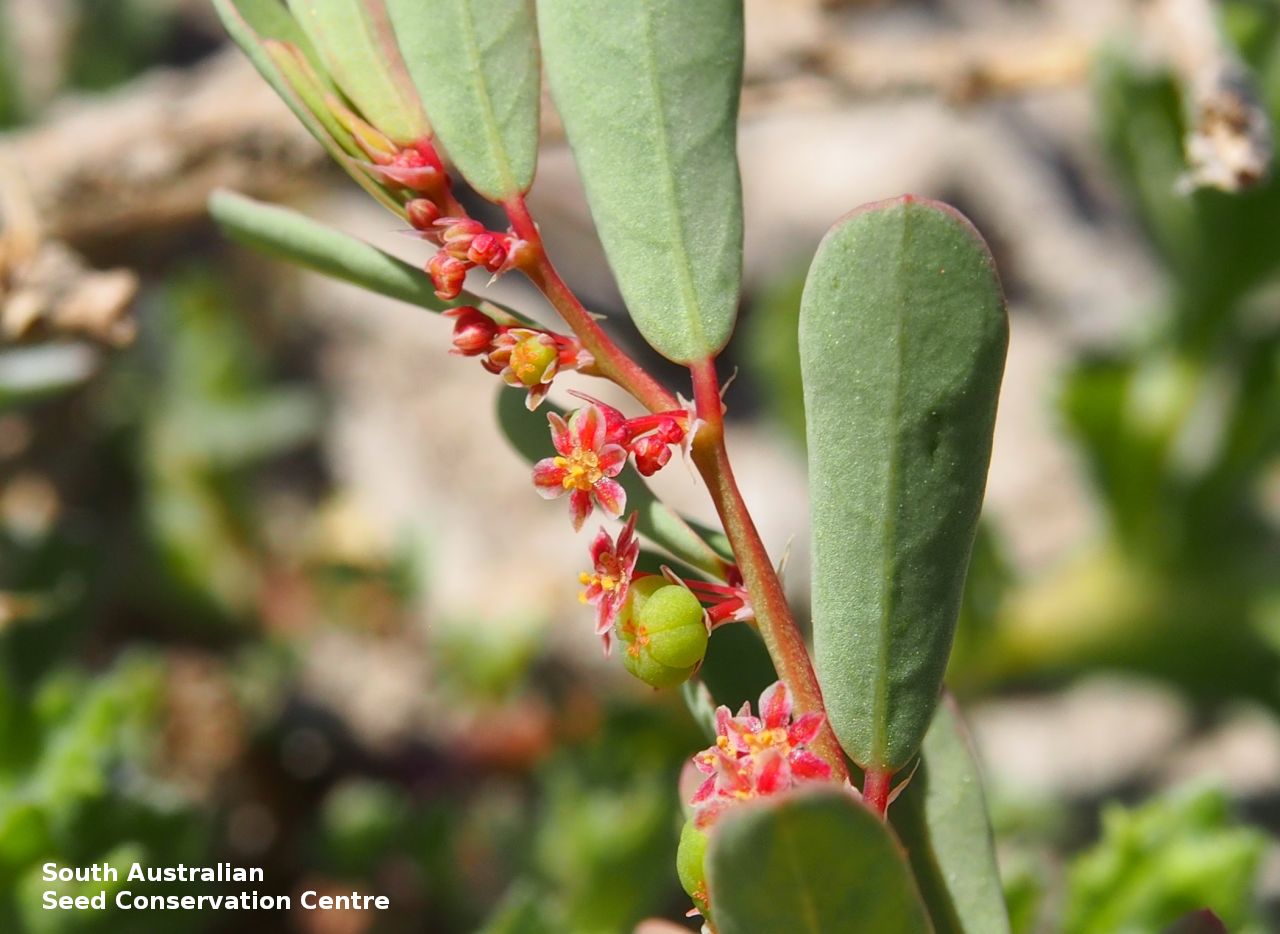
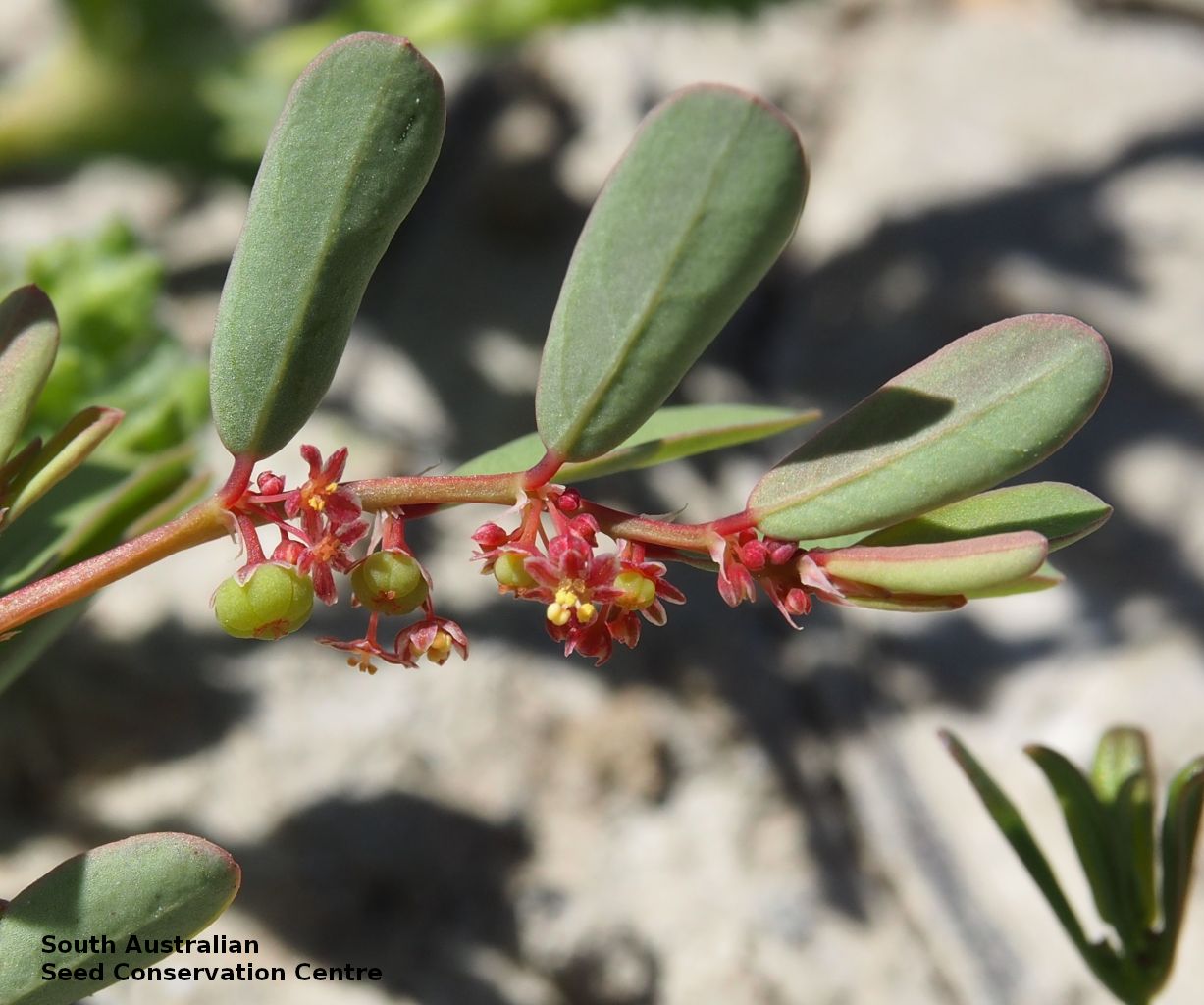
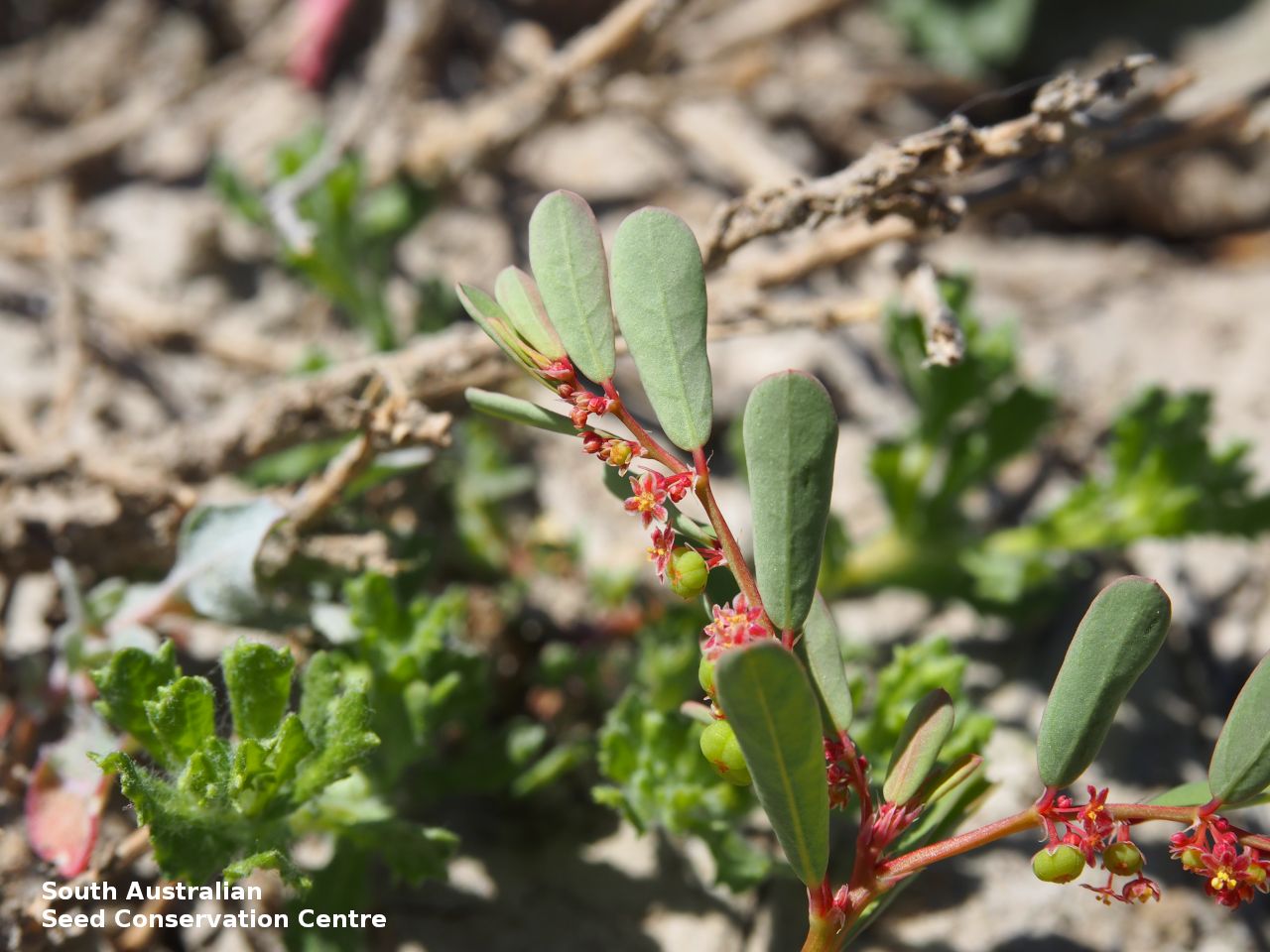
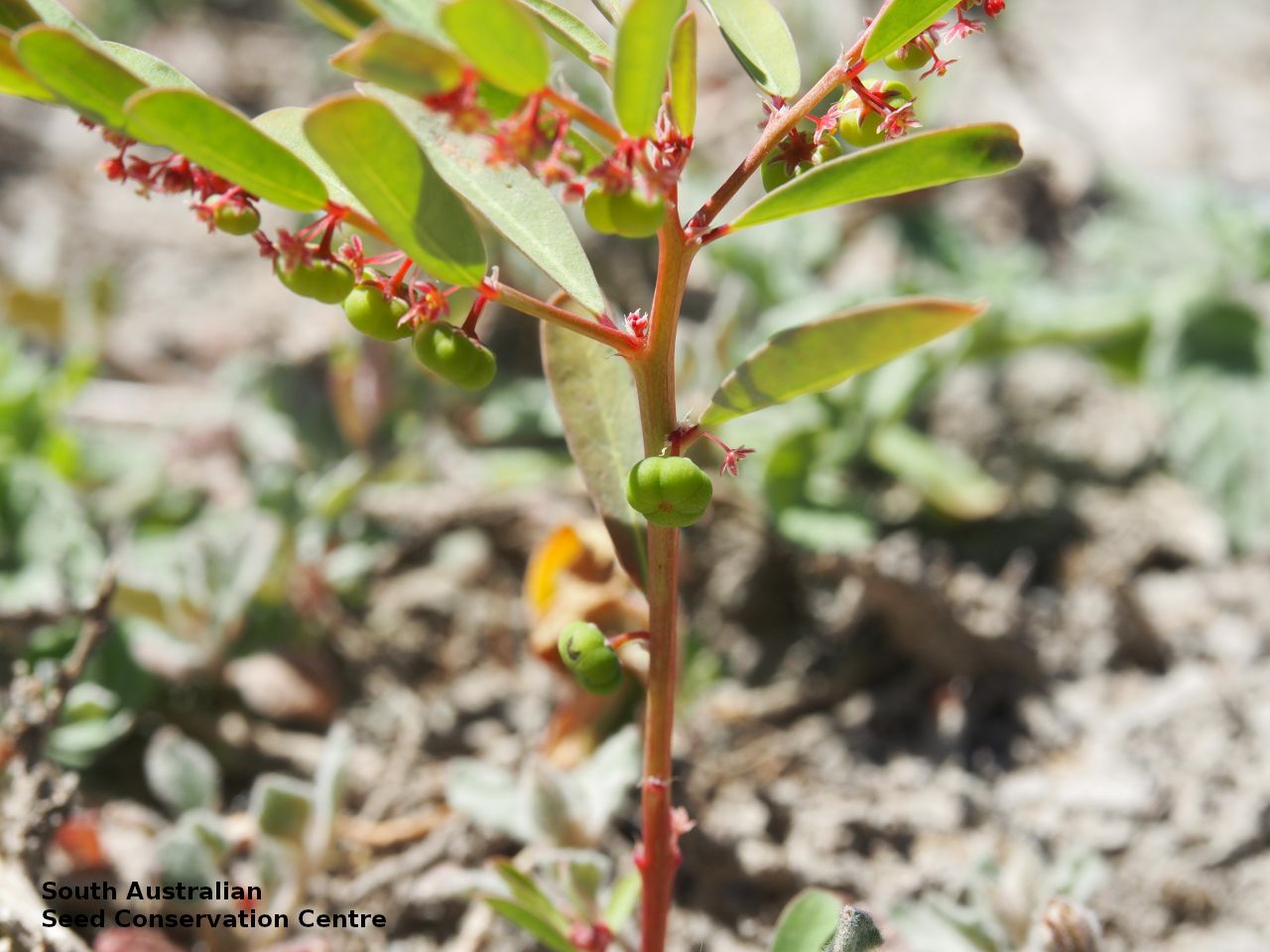
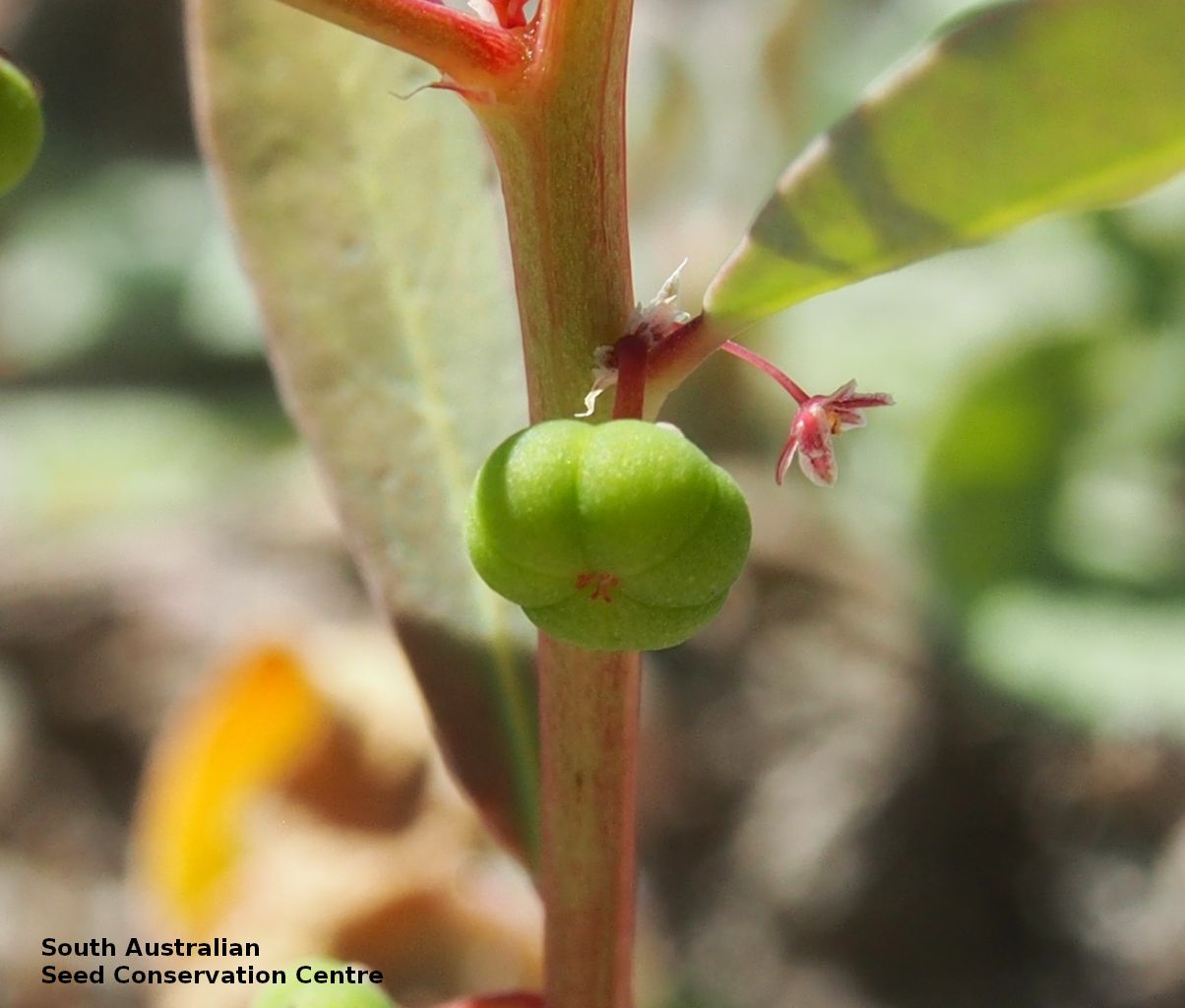
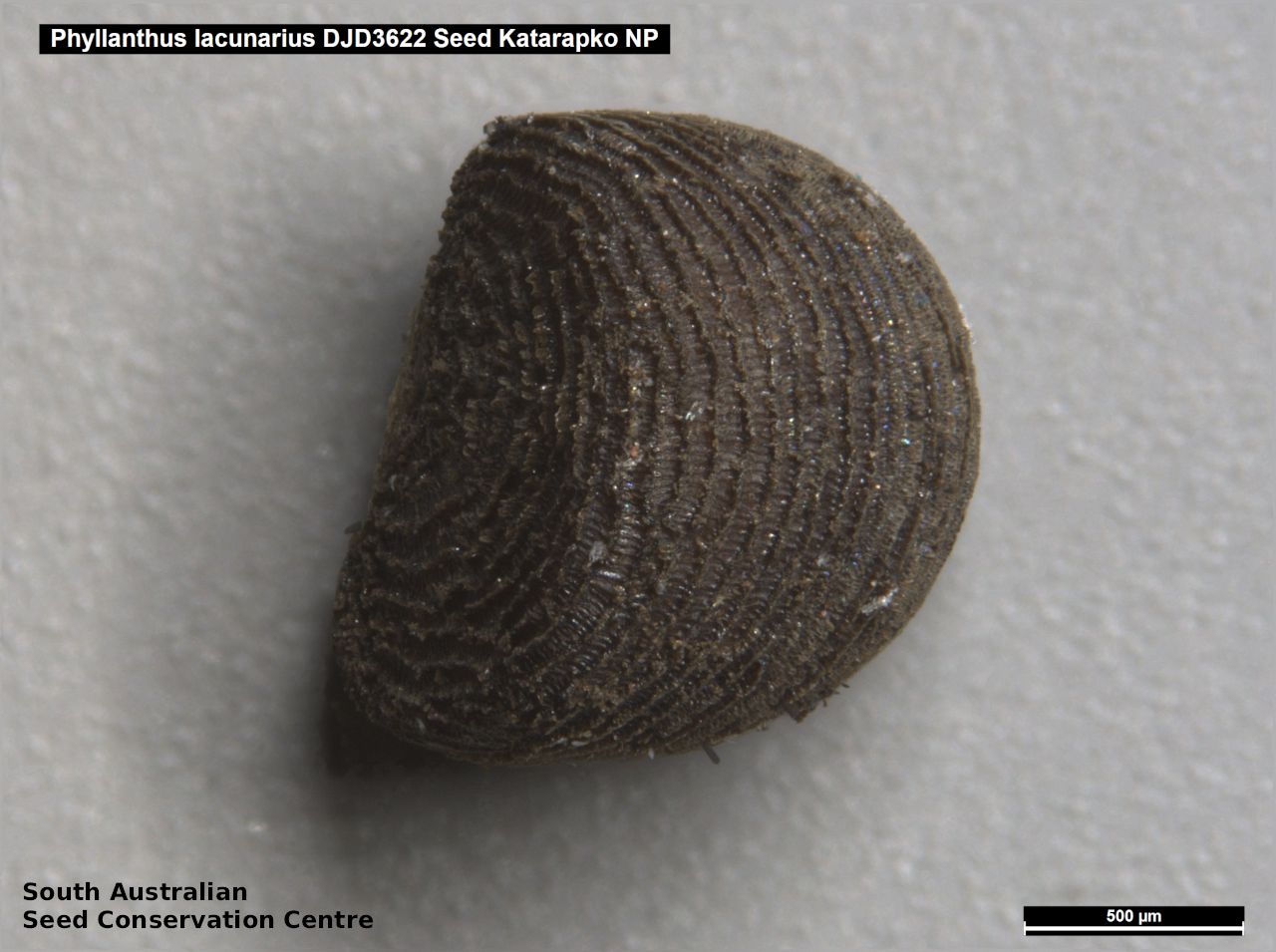
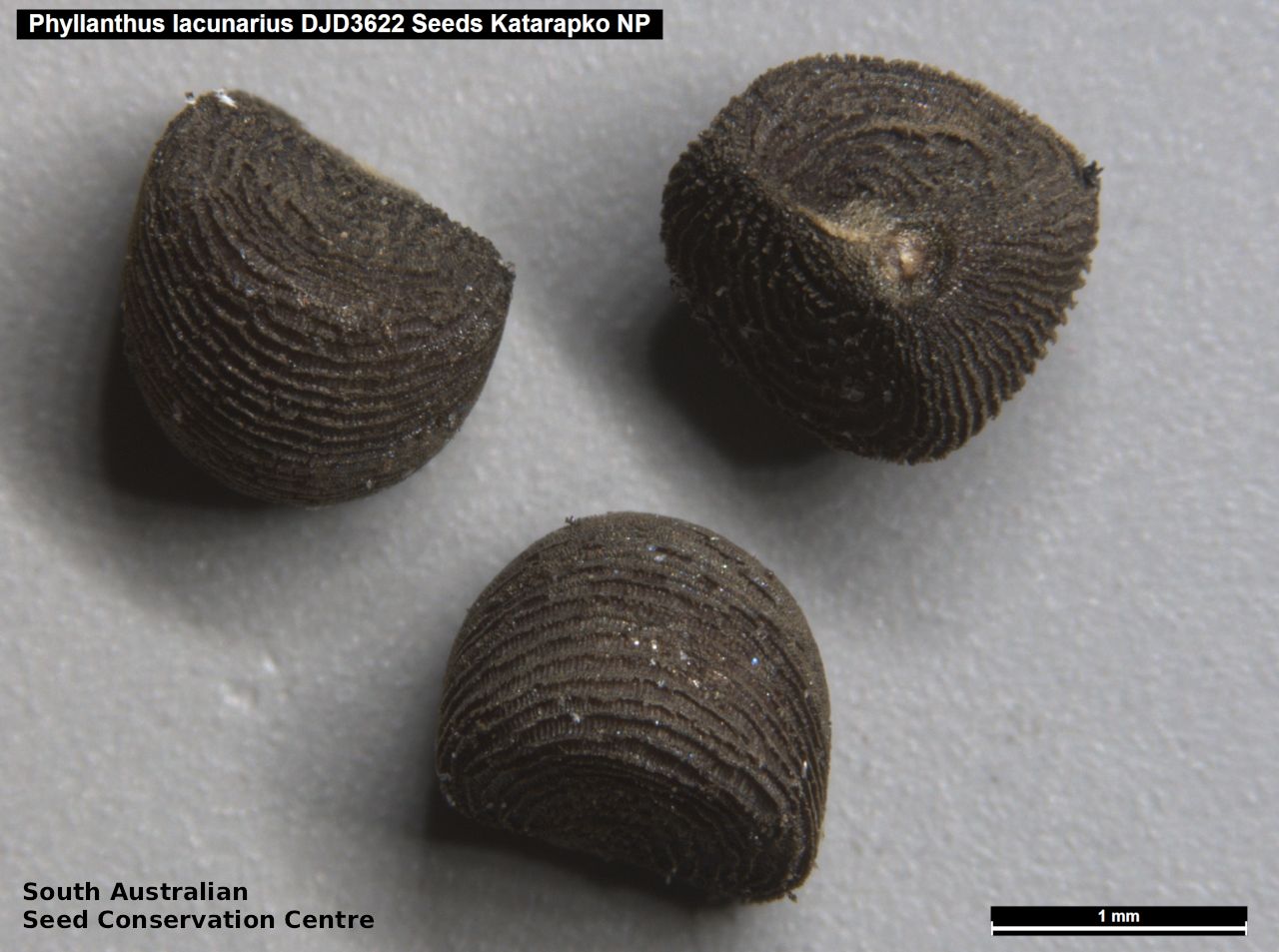

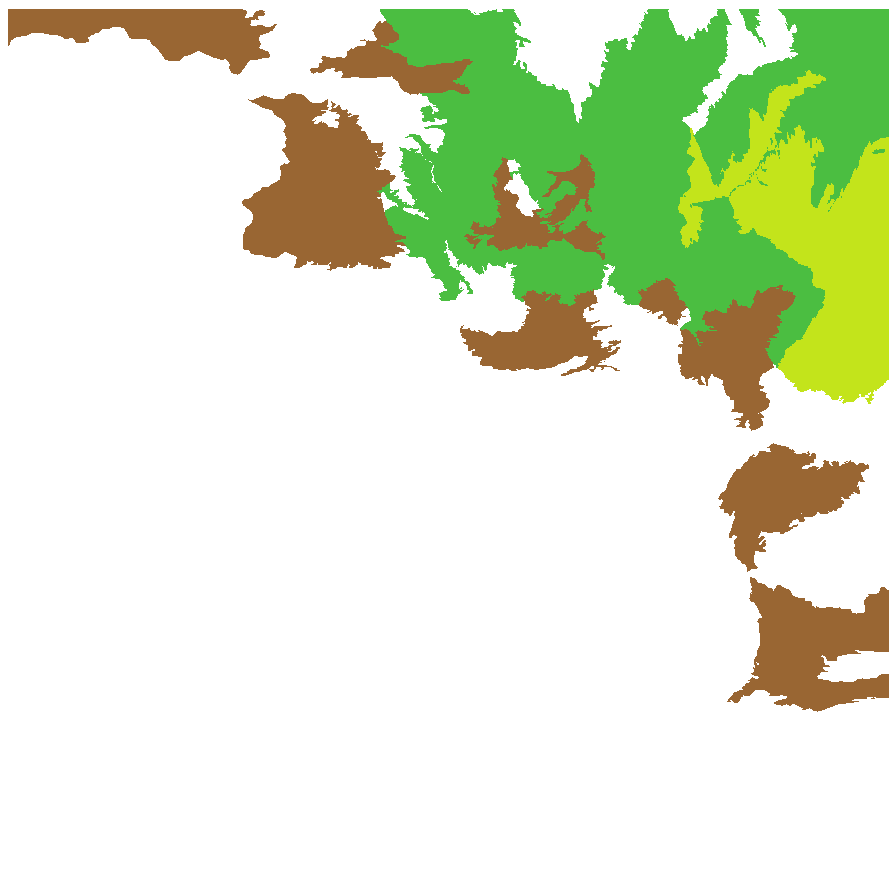
Prior names
Phyllanthus lacunarius
Etymology
Phyllanthus from the Greek 'phyllon' meaning a leaf and 'anthos' meaning a flower; referring to some foreign species where the flowers grow on the edges of dilated leaf-like branchlets. Lacunarius from Latin meaning growing in lake, pond or dykes; referring to the species habitat in river and creek beds and on flood plains.
Distribution and status
Found on the eastern part of South Australia, north of the Murray, growing in river and creek beds, along banks and on flood plains. Also found in Queensland, New South Wales and Victoria. Native. Common in South Australia. Rare in Victoria. Uncommon in the other states.
Herbarium regions: Lake Eyre, Murray
NRM regions: South Australian Arid Lands, South Australian Murray-Darling Basin
AVH map: SA distribution map (external link)
Plant description
Annual her to 25 cm tall, with prostrate to ascending glabrous stems. Leaves alternating up the stems, to 20 mm long and 7 mm wide, flat, glabrous, tips rounded with a short point. Male and female inflorescence on the same plant with small (less than 3 mm across) reddish with white margins flowers. Inflorescence in clusters on short stalks at the bases of the leaves, with 2-3 male flowers and one female flower. This species is similar to Phyllanthus lacunellus which is a perennial with a woody base, growing in sandy soils, fruiting bodies are 2-3 mm in diameter and has a fine wrinkled seed texture. Flowers throughout the year dependence on rainfall. Fruits are green depressed globular capsule to 3 mm long and 4.5 mm wide, glabrous, with three lobes. Seeds are orange-brown sectoroid seed to 1.5 mm long and 1.5 mm wide, with a striated surface. Seed embryo type is spatulate fully developed.
Seed collection and propagation
Collect seeds between January and December. Collect individual mature capsules, those that are drying off, fat and contain dark hard seeds or pull out the whole plant (annual) to allow capsules to continue to mature. Green capsules can be collected if the seeds are dark and hard. Place the capsules in a tray and leave to dry for one to two weeks. Then gently rub the capsules with a rubber bung to dislodge the seeds. Use a sieves to separate the unwanted material. Store the seeds with a desiccant such as dried silica beads or dry rice, in an air tight container in a cool and dry place.
| Location | No. of seeds (weight grams) | Number of plants | Date collected | Collection number Collection location | Date stored | % Viability | Storage temperature |
|---|---|---|---|---|---|---|---|
| BGA | 16,670 (18.991 g) | 200+ | 19-Apr-2023 | BKB277 Murray | 20-Jun-2023 | 70% | -18°C, -80°C |
Number of plants: This is the number of plants from which the seeds were collected.
Collection location: The Herbarium of South Australia's region name.
% Viability: Percentage of filled healthy seeds determined by a cut test or x-ray.